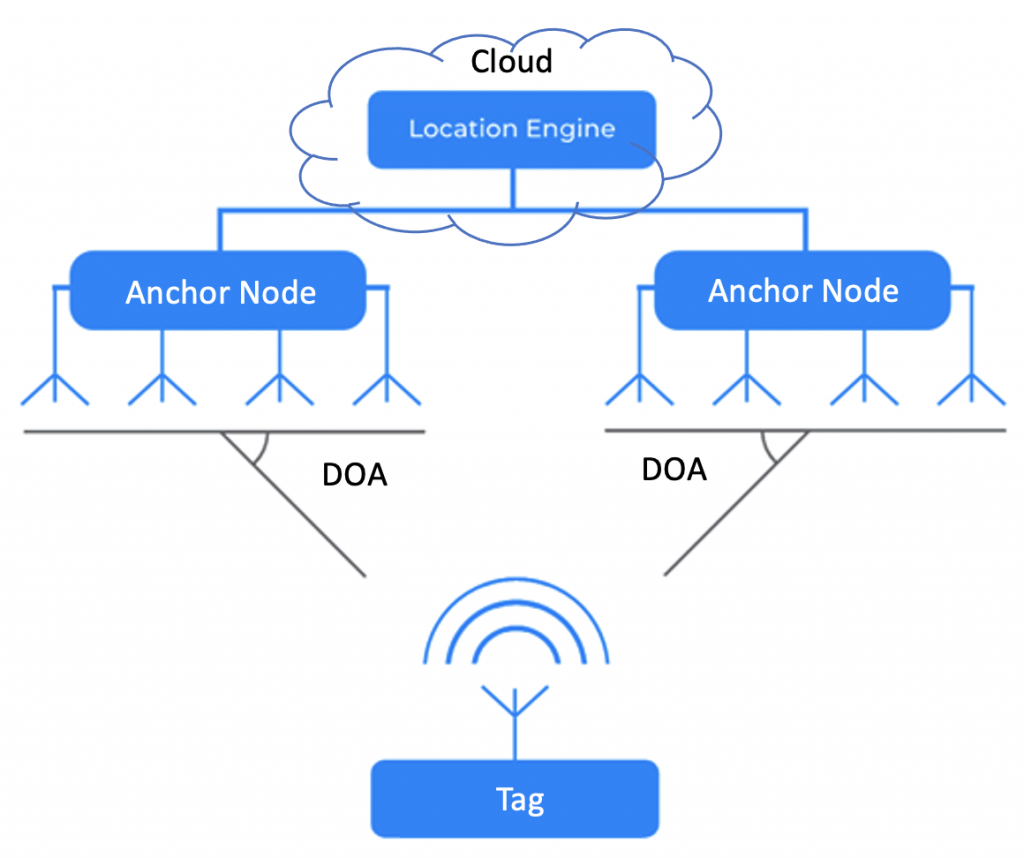The direction of arrival (DOA) of radio signals denotes the direction from which a radio wave reaches a set of antennas also known as antenna arrays. In the DOA terminology, the tag is a device that transmits radio signals to other devices that have an antenna array called anchor nodes. In the case of indoor positioning systems, the estimation of DOAs is an intermediary step to calculate the position of tags. Figure 1 depicts the main devices in DOA-based indoor positioning systems.

Figure 1: Architecture of a DOA-based indoor positioning system
In our research, we consider deploying a DOA-based indoor positioning system in a mesh Internet of Things network which is composed of many nodes that are mostly low-cost battery-powered constrained embedded devices. Some of them are anchor nodes and tags. Due to the intrinsic complexity of DOA methods, a reasonable approach consists in executing them in the cloud. That approach would consume considerable energy consumption of nodes in the network as discussed in the paper. So, we suggest executing DOA methods in anchor nodes since that would be a low-cost and low-power solution.
However, the implementation of DOA algorithms in IoT devices poses a real challenge, since such devices are typically battery-powered constrained embedded systems with very limited computational resources, in contrast, DOA methods are composed of resource-hungry and time-consuming complex numerical algorithms that could easily lead to depletion of batteries, unacceptable execution time and resource starvation. Thus, our research takes a novel approach and suggests an optimized implementation of a DOA method to alleviate the cited computational burden by exploiting the radio communication system design. The implemented solution is tailor-made for commercial constrained IoT devices written in the C99 programming language.
Finally, the suggested DOA method was tested 6000 times with a channel model in addition to noise. Additionally, we measured the energy consumption and memory footprint which are essential parameters for battery-powered embedded systems. Experiments show the implemented solution is battery-operatable and satisfies the hardware requirements of commercial IoT devices.
Read the fill paper on Zenodo: https://zenodo.org/record/6787192
or in IEEE: https://ieeexplore.ieee.org/document/9797023

